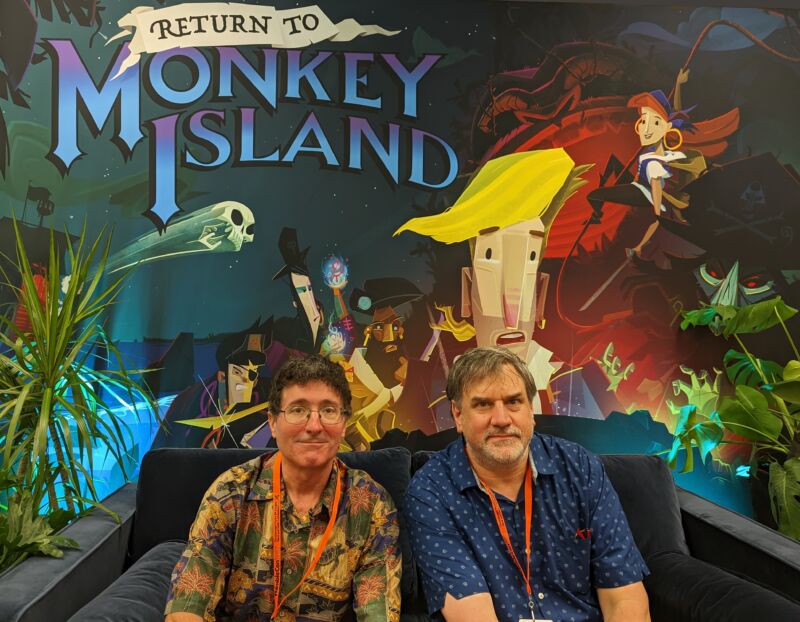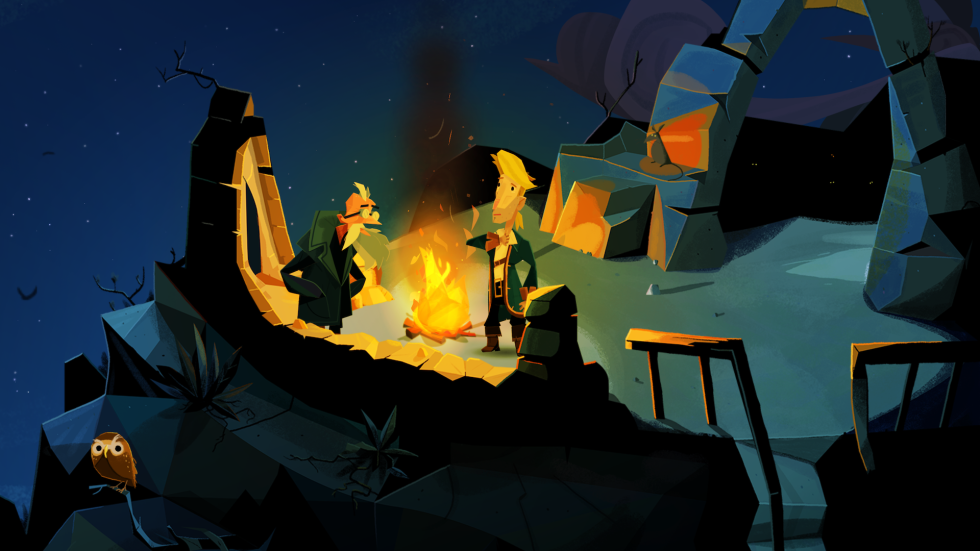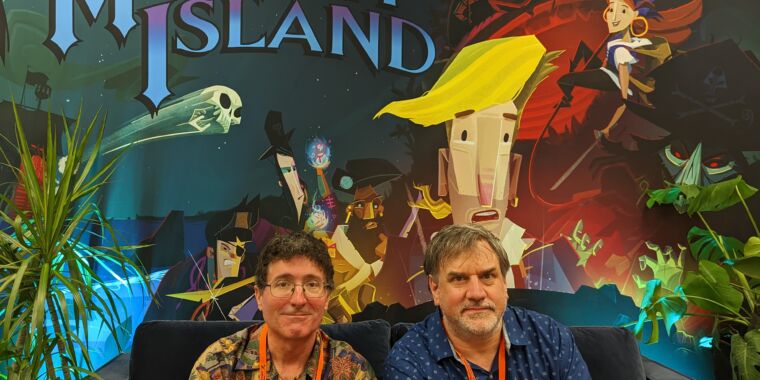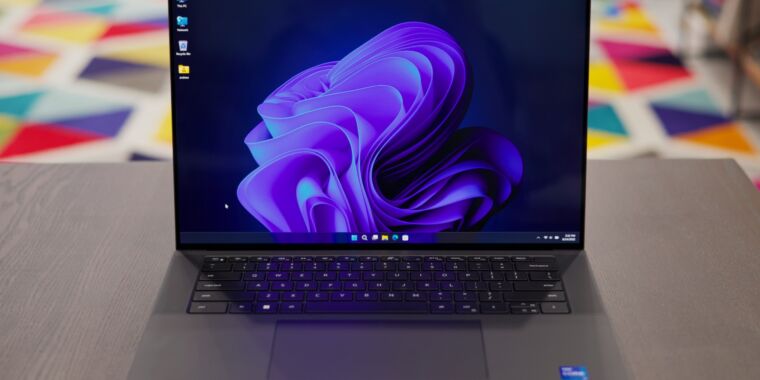
Sam Machkovech
SEATTLE—Longtime game designer Ron Gilbert has repeatedly suggested that a sequel to his beloved Monkey Island series would arrive how fans want it: unspoiled. It’s a major reason why the point-and-click adventure’s pre-release period has been devoid of gameplay footage or other major giveaways of what to expect, lest any of its puzzles or jokes be ruined.
As the long-awaited Return to Monkey Island approaches its September 19 release date, then, interested fans will have to tide themselves over with the bones Gilbert and his collaborator Dave Grossman threw my way at this weekend’s PAX West. After I entered their meeting room and sheathed my camera, the pair turned on an external display, picked up a computer mouse, and began goading hero Guybrush Threepwood around the new game’s environs.
You might be jealous, but I would argue that your comparable ignorance about how the game looks and sounds is a happier place to be until September 19. My patience for this game’s release has now dwindled.
“Rediscovering that about your past self is really interesting”

Terrible Toybox
Editor’s note: This article is careful not to spoil a single puzzle, joke, or unannounced character reveal. One plot-specific reveal, which Gilbert and Grossman were happy to announce, lands near the end of the article.
“Wanna do ‘Monocle’? Wanna do ‘Jail’?” Gilbert, sitting next to Grossman, rattles off a few vague terms while picking through a debug menu on a near-final macOS build of the game. After deciding on where to take me in gameplay, Grossman seems caught off guard: “Oh!” he blurts. “Cut scene happening.” I ask if everything is fine, to which Gilbert replies, “It’s a little spoiler-ish.” The scene in question is unsurprising as far as Monkey Island lore goes, but I’ll leave its details mum for now, except to say: it got me laughing, and it confirmed my confidence in the game’s art direction.
The scene, like the rest of the game, includes accurately mapped lip sync for its fully voiced dialogue, and its hand-drawn characters are appropriately rigged to look like detailed paper cutouts being tugged every which way. Eyes bulge, faces distort, and arms and hands emote in a manner that preserves the sequel’s “ripped from a picture book” aesthetic without resembling a dated Adobe Flash animation project. Instead, the conversation sequences I saw fondly recalled some of my favorite ’90s children’s books, especially the works of Lane Smith (The Stinky Cheese Man, The True Story of the Three Little Pigs) as if they’d been animated by devoted fans of the source material.
It didn’t hurt that the scene in question embraces the series’ classic sense of humor. This scene toys with the classic archetype of a bad guy steering into folly, complete with henchmen who suggest “safer” business decisions that happen to be illegal and brutal—then campily telegraphs to players the exact path they will take to ruin someone’s day. This 90-second exchange instantly put me at ease as a classic Monkey Island fan: as if I’d put on a comfortable, well-worn peg leg after all these years.
In checking with Gilbert and Grossman about the sequel’s sense of humor, the duo confirmed that they replayed the series’ classic games before beginning work on the newest sequel—and Gilbert says a mass game-playing revisit of his old titles is standard practice before he starts any new game project. As they’ve previously suggested, the new game pulls characters and ideas from 1997’s Curse of Monkey Island (which neither worked on), while Grossman admits that the Starz historical-fiction series Black Sails also influenced the duo: “It’s not written by humorists at all, but there are a lot of interesting ideas.”
In describing his habit of replaying old games before making new ones, Gilbert describes “rediscovering that feeling of, oh, I once thought this, or, this is the way I wrote about this stuff. Rediscovering that about your past self is really interesting, yet also, you know, we aren’t the same people anymore. So we’re not going to just pretend like we made this game in 1993. We’re going to use everything we’ve learned as designers, writers, and people, and put all that into the new game.” To this point, the duo emphasized “empathy” with how players encounter and figure out puzzles, compared to the sometimes brutal difficulty walls of the original games.








